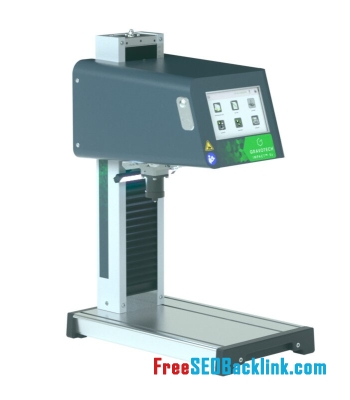Favorites | Delete favorites
sell house (Delete)
In the world of industry and manufacturing, marking and engraving are essential processes for tracking, identifying, and branding products. Various methods are used for this purpose, and one of the most efficient among them is the Dot Peen Marking Machine. Also known as impact engravingpin marking, this method is widely used in different industries due to its high precision, durability, and ability to engrave on various surfaces.
This article will explore the working mechanism, applications, advantages, and limitations of dot peen marking machines and compare them with other engraving methods.
A dot peen marking machine uses a hardened stylus that applies consecutive impacts to create small dots on the surface of a workpiece. These dots form a readable pattern, text,code (such as serial numbers, manufacturing dates,2D barcodes).
A typical dot peen marking machine consists of the following components:
- Marking stylus: Made of tungstencarbide for high durability
- Impact mechanism: Uses pneumaticelectromagnetic systems
- Electronic controller: Adjusts speed, depth, and marking pattern
- Design software: Creates patterns and texts to be engraved
Under the control of dedicated software, the stylus moves sequentially across the surface, striking it to form the required markings. The process can be performed using two main mechanisms:
- Pneumatic: Uses compressed air to increase impact speed and force.
- Electromagnetic: Utilizes magnetic coils to control the stylus movement, resulting in higher precision.
Dot peen machines are used for engraving Vehicle Identification Numbers (VIN), part numbers, logos, and industrial barcodes on metal automotive parts.
In aerospace applications, components require precise and durable markings. Dot peen marking is ideal for engraving engine parts, fuselage components, and aviation tools.
Medical instruments made of stainless steel and titanium need identification codes. Dot peen marking allows precise engraving on these surfaces.
Dot peen machines are widely used to mark printed circuit boards (PCBs) and other electronic components.
This technology is used for marking weapons, military equipment, and critical components to ensure traceability and identification.
Since dot peen marking is an impact-based method, the markings remain intact and resist wear, heat, and chemicals.
Dot peen machines can engrave detailed information quickly and accurately on various surfaces.
These machines can engrave hard metals such as steel, aluminum, and titanium, as well as hard plastics.
Unlike laser engraving, dot peen machines have lower maintenance costs as they do not require expensive components like CO2fiber lasers.
These machines can engrave on cylindrical, curved, and rough surfaces without compromising quality.
The impact process generates noise and vibration, which can be problematic in certain work environments.
Some softbrittle materials may get damaged under the stylus pressure.
Compared to CNC mechanical engraving, dot peen marking has depth limitations.
This method is not suitable for materials like glass, ceramics, and some soft plastics.
When selecting a suitable machine, consider the following factors:
- Material type for engraving
- Required speed and precision
- Budget and maintenance costs
- Need for marking on special surfaces (curved, uneven, etc.)
- Control system and software compatibility
Dot peen marking machines are one of the most cost-effective and efficient marking solutions in various industries. Due to their high durability, suitable speed, and ability to engrave on different materials, they hold a crucial position in industrial manufacturing. Although challenges like noise generation and engraving depth limitations exist, dot peen marking remains an ideal choice for many industrial applications.
Choosing the right machine depends on industry needs, and evaluating factors such as material type, precision, cost, and work conditions can help in decision-making. With technological advancements, dot peen marking machines are expected to become even more accurate and efficient in the future, expanding their use across more industries.



Register comment (5 Score)